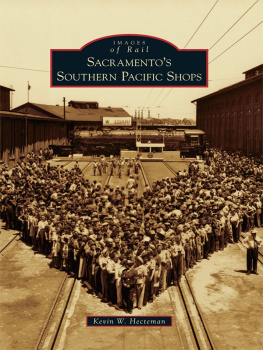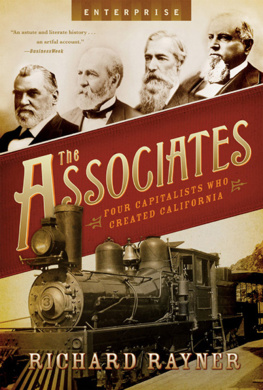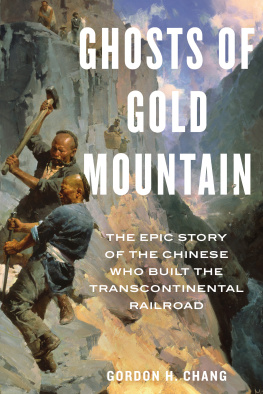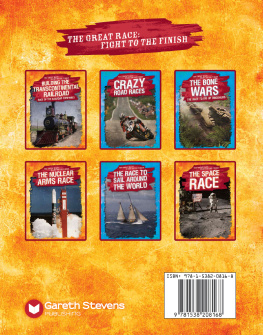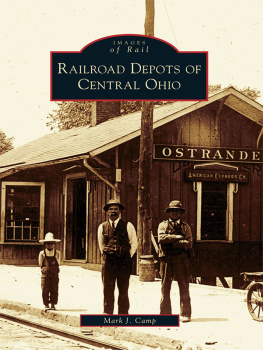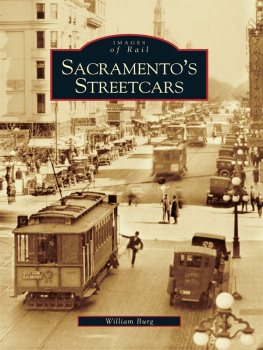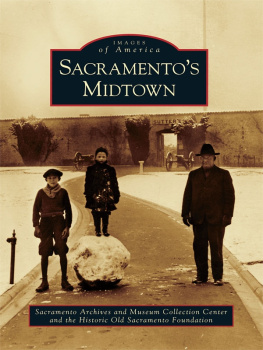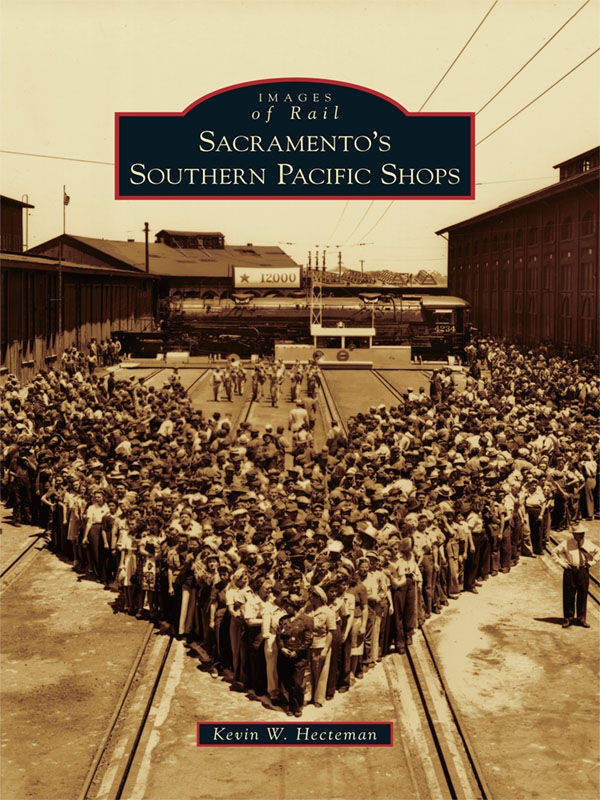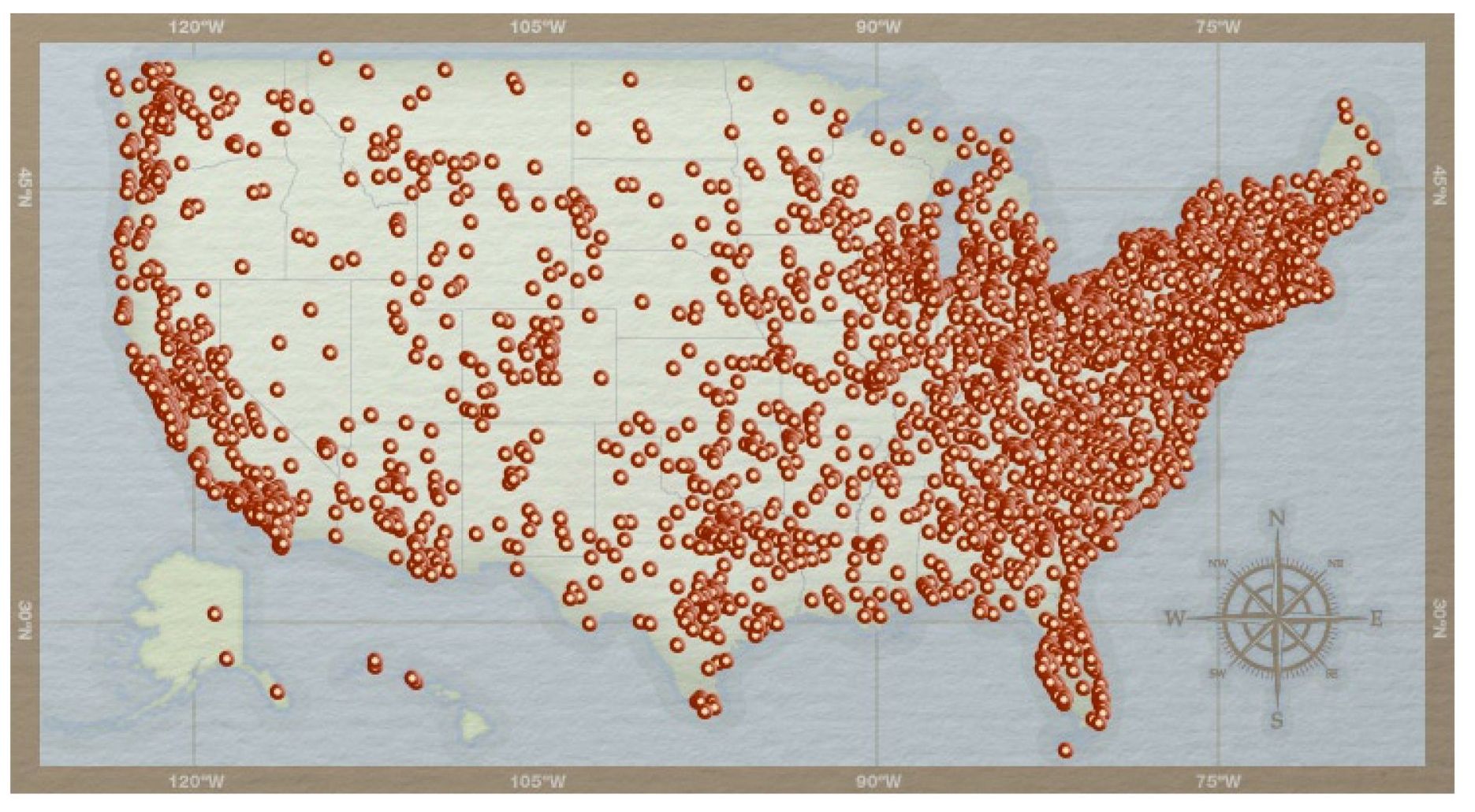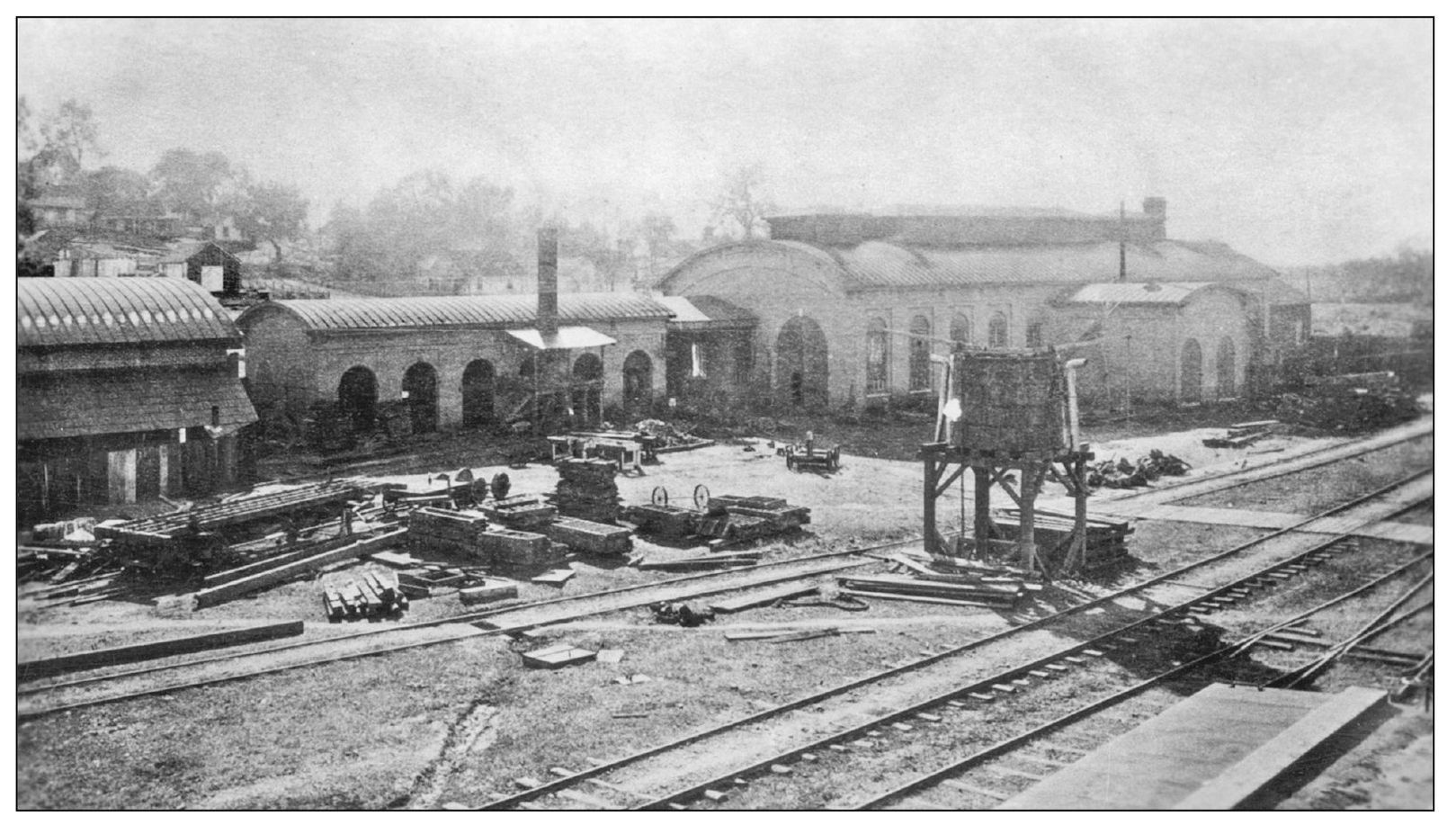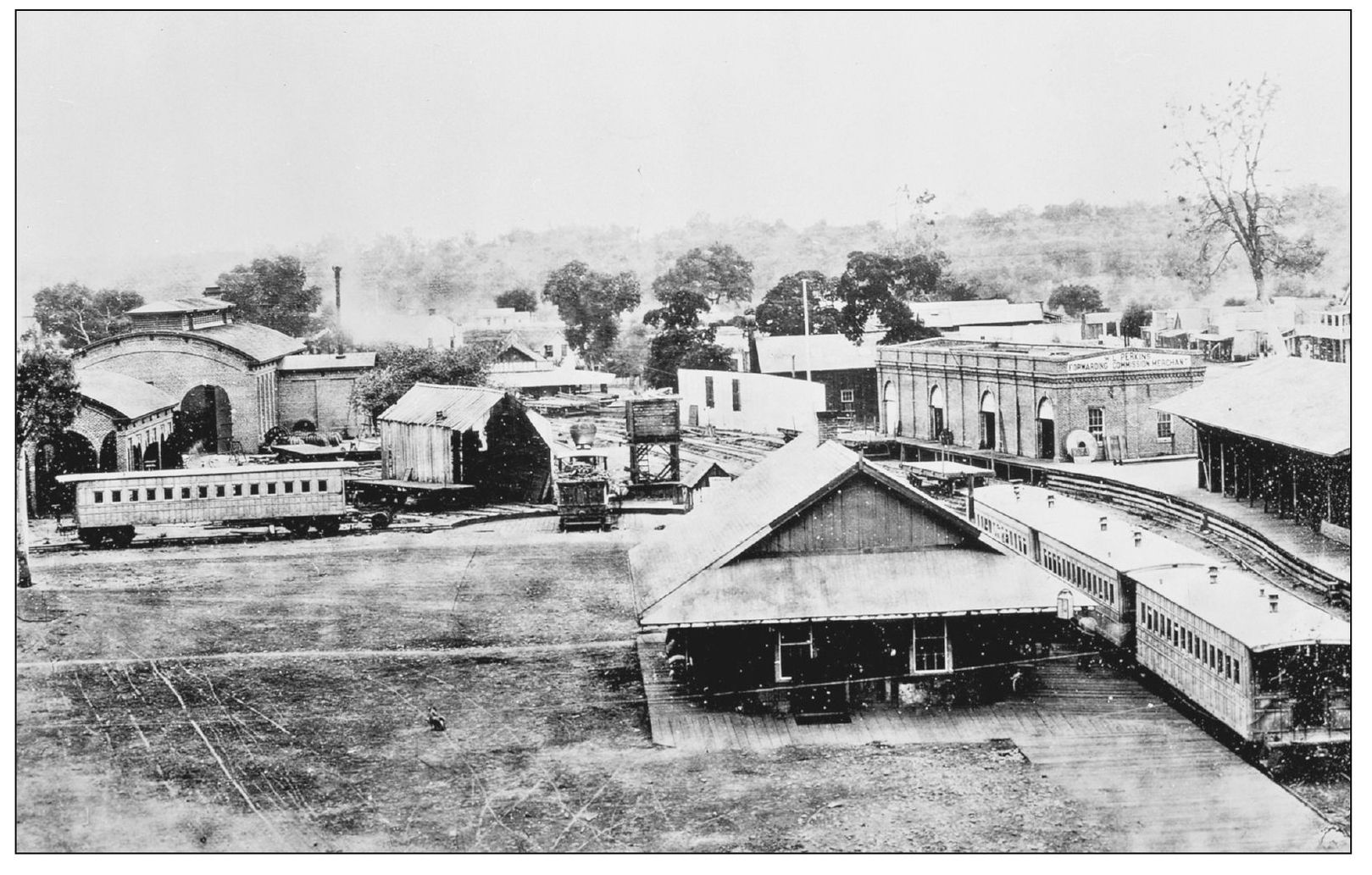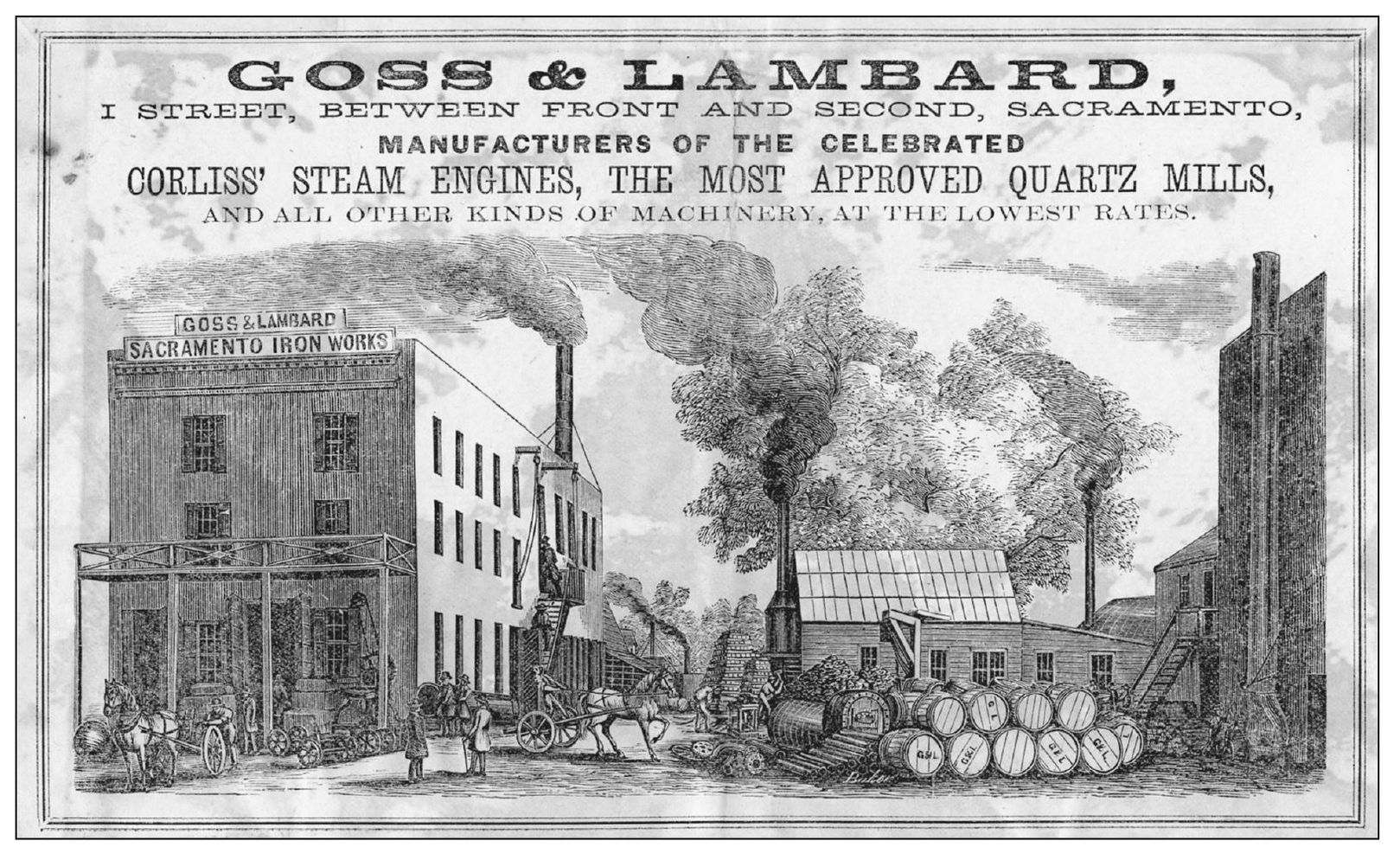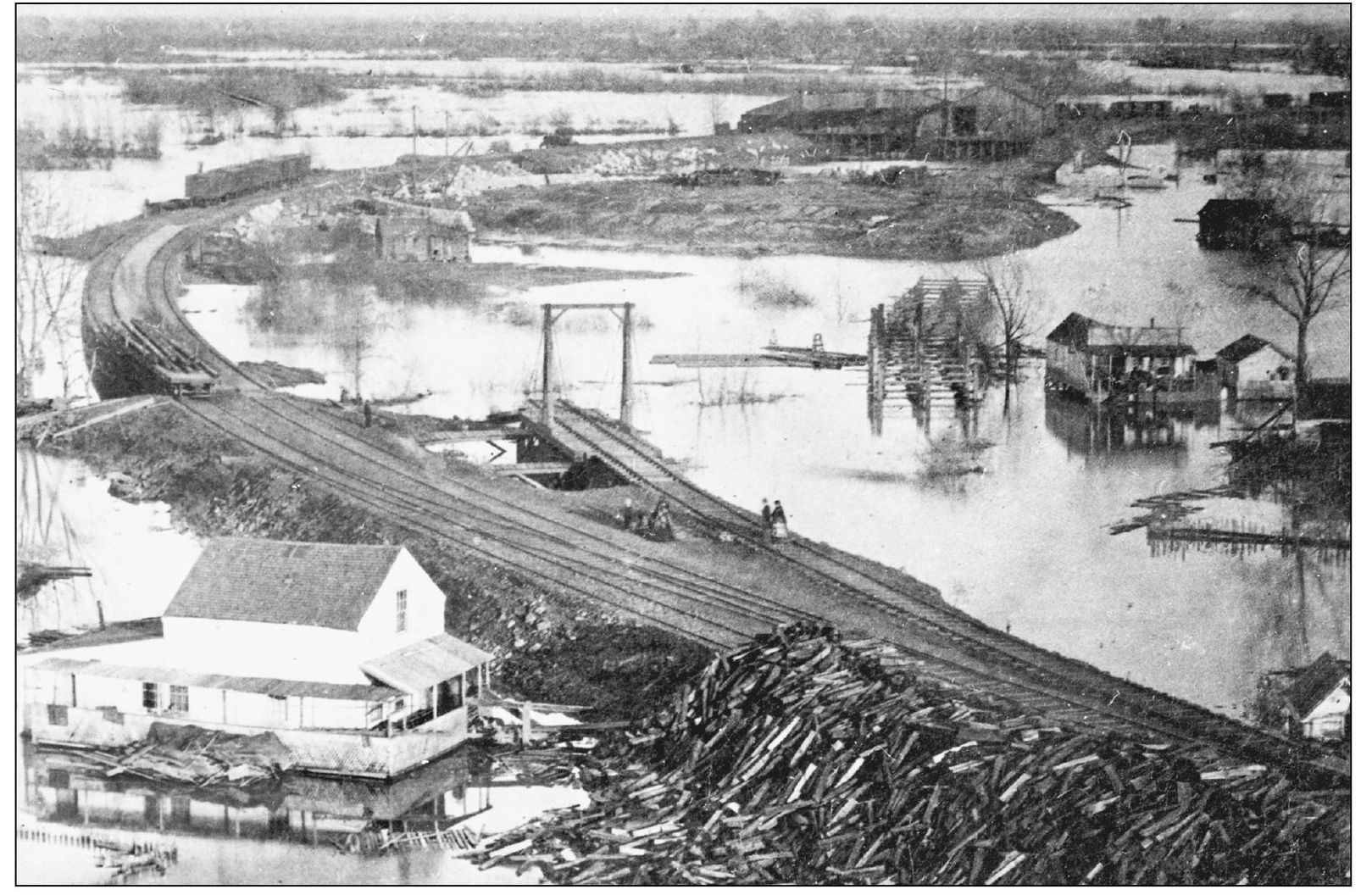ACKNOWLEDGMENTS
No author ever produces a book alone. In this endeavor, I had the help of many people and organizations, without whom this book would still be an idea rattling around in my head.
I will start with the California State Railroad Museum Library. Ellen Halteman, Cara Randall, and Kathryn Santos again went above and beyond the call of duty, helping me dig up photographs and information and processing a sizable number of photograph orders. Kyle Wyatt, the museums curator of history and technology, knows the Sacramento shops inside and out. He was most helpful pointing out sources and references, resolving contradictory information, and making corrections to the manuscript. Thanks to Paul Hammond, the museums director, for his support of the project. (Full disclosure: The author is a docent at the California State Railroad Museum.)
I cannot thank enough the staff of the Center for Sacramento History, formerly known as the Sacramento Archives and Museum Collection Center. Pat Johnson, Rebecca Crowther, Dylan McDonald, and Carson Hendricks were instrumental in helping me find critical images for the book and scanning them in. One of the greatest pleasures of this project was the opportunity to meet Shirley Burman, a wonderful person who is married to one of the greatest rail photographers of the age: Richard Steinheimer. Thanks to Shirley, I have the opportunity to use some of her husbands work, as well as her own, in this book. Shirley, I cannot thank you enough. Thanks to Tom Tolley and the staff of the Sacramento Room at the Sacramento Public Library; Steve Yee of the Friends of the Yee Fow Museum, Sacramento; Bill Cerruti of the Sacramento Italian Cultural Society; Richard Rich, development director, Thomas Enterprises; John Bromley of the Union Pacific Museum in Council Bluffs, Iowa; Cynthia Franco of the DeGolyer Library at Southern Methodist University in Dallas; and the men and women of the Historic American Engineering Record, a project of the National Park Service, who spent the summers of 2001 and 2002 documenting the Sacramento shops in drawings, photographs, and written histories. Thanks to my proofreaders: Kyle Wyatt, Bill Burg, Gwen Cox, and Jeff Aberbach. And finally, thanks to John Poultney, my editor at Arcadia, and to my parents, Roy and Barbara, for their love and support.
Find more books like this at
www.imagesofamerica.com
Search for your hometown history, your old
stomping grounds, and even your favorite sports team.
One
ORIGINS AND EVOLUTION
The first railroad shops in Sacramentoand Californiawere established by the Sacramento Valley Railroad, the golden states first operating railway. The SVRR, according to D. L. Joslyn, built its first shops near Front and R Streets in Sacramento around 1855 and proceeded to build passenger and freight cars there. Shortly after the line from Sacramento to Folsom opened in 1856, the SVRR moved its shops to Folsom. The Central Pacific, which incorporated in 1862 to build east from Sacramento, initially had to contract out locomotive repair and assembly. The Goss and Lambard Iron Works, on I Street between Front and 2nd Streets (about where the California State Railroad Museum lobby is now), assembled the CPRRs first locomotive, the Gov. Stanford . The Central Pacifics Sacramento shops began life in 1867 on the swamps north of town, near Lake Sutter (aka Old Slough or China Slough). By 1869, the basic form of the shops was in place. The shops initially employed 15 men; by the early 1900s, about 3,000 people in all crafts worked there. The late 19th century was also the heyday of master mechanic Andrew Jackson Stevens, master car builder Benjamin Welch, and chief draftsman George Stoddard. Their efforts and those of the people working under them helped the Central Pacific transform from an idea into a working railroad capable of meeting any challenge laid before it.
The Sacramento Valley Railroad had built shops at Front and R Streets in Sacramento, but soon after its 1856 opening, the shops were moved to these brick buildings in Folsom. The owners of the Central Pacific took over the SVRR in 1865, but these shops remained in operation until the 1890s. Bricks from these shops were used to build the Folsom powerhouse, which still stands. (Both courtesy of the California State Railroad Museum Library.)
Be it ever so humble ... the Central Pacific Railroad incorporated in 1862 with transcontinental ambitions. The CP built this shed on the east bank of the Sacramento River at the foot of I Street. It served as a toolshed and as the CPs first passenger depot in Sacramento. It was demolished in 1867. (Courtesy of the California State Railroad Museum Library.)
Central Pacific No. 1, the Gov. Stanford , was the new railroads first locomotive. It was built by Richard Norris in Philadelphia and shipped around Cape Horn, arriving aboard the river schooner Artful Dodger on October 5, 1863. As the CP did not yet have suitable shop facilities, the Goss and Lambard foundry on I Street assembled the locomotive. The Gov. Stanford is now on display in the California State Railroad Museum, just yards from where it was assembled. (Courtesy of the California State Railroad Museum Library.)
The Goss and Lambard foundry stood near the northwest intersection of 2nd and I Streets. The Central Pacific bought the foundry lock, stock, and barrel about 1868. The California State Railroad Museum entrance and lobby occupy this approximate site today. (Courtesy of the Center for Sacramento History.)
Thomas Houseworth published this photograph during a time of high water in the winter of 18671868. The Central Pacific has built a turntable at center; shop buildings are taking shape at upper right. At upper center, the back wall of the roundhouse can be seen under construction. (Courtesy of the California State Railroad Museum Library.)
By the 1870s, the shops had achieved the basic form they still exhibit today. The photographer is looking northwest across Lake Sutter (China Slough). The Hammer Shop and Rolling Mill are to the left. Behind the Rolling Mill to the right is Car Shop No. 3. At right rear is the powerhouse smokestack. (Courtesy of the California State Railroad Museum Library.)

